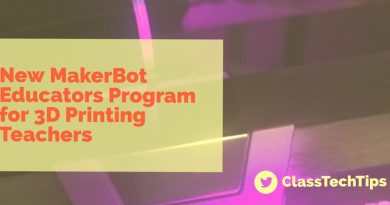An OER curriculum brings my students’ lives into our classroom
An OER science curriculum has completely revolutionized the way I teach and has transformed the way my students relate to their learning
When I was growing up, I assumed that my teachers knew everything, including all of the “right answers.” Now that I’ve been a teacher for 15 years, I know this simply isn’t true. In fact, some of the most powerful learning in my middle school science classroom happened when I pretended NOT to know the “right answer.” That’s when students take the lead and start to offer up their own ideas, share their experiences, and make powerful connections—sometimes amazing ones that I would never have thought of.
Teaching this way requires a lot of flexibility—including in your curriculum. A traditional science textbook doesn’t always allow educators to delve into topics that students bring up from their own lives or questions about the world around them. That’s why I’ve turned to open educational resources (OER).
OER are openly licensed, which means that educators can use, customize, and share these resources for free, allowing them to incorporate fresh and relevant material for their students—all without having to worry about traditional copyright restrictions. I’ve been using an OER science curriculum called OpenSciEd for five years, which has completely revolutionized how I teach. It’s also transformed the way my students relate to and take ownership of their learning.
My students come from not only all over the city but also all over the world. Our student population represents more than 30 languages, and many of them are new to learning English. They bring rich life experiences to the classroom, and OpenSciEd enables them to talk about those experiences and knowledge more so than any other curriculum I’ve used.
In a unit about mountain formation, we discussed how an earthquake shifted Mount Everest and made it taller. One of my students, who came from Nepal, shared that she had been to Mount Everest and was able to describe the environment and terrain for her classmates.
In another unit on ecosystem dynamics and biodiversity, students looked into how the harvesting of palm oil, a common ingredient in chocolate, can endanger the habitats of orangutans. One of my students came from Cameroon, one of the world’s top palm oil producers. He spoke proudly of seeing orangutans and the palm trees that produced the oil, and he enthusiastically worked with his classmates to design a palm oil farm that benefited both the orangutans and farmers in his home country. All of this happened because I stepped back—and because the instructional materials gave my students opportunities to find meaningful connections to their lives.
In addition, because the OpenSciEd curriculum is fully editable, I’ve been able to make changes to meet my students where they are. For example, I’ve edited the student-facing slides to break up the language, and I’ve added sentence starters and “drag and drops” into our digital notebooks to scaffold the learning for our English learners. I also love that I can take this high-quality curriculum and rearrange the order of the units, remove material that isn’t as relevant to our school or students, and even add in other materials, like district-created units.
Having used OpenSciEd for five years, I’m confident I’ll never go back to teaching with a traditional textbook. My students are more excited about science than ever, and they’re connecting what they’re learning to their lives and experiences.
Open educational resources like OpenSciEd are a critical tool for teachers who, like me, want their students to see themselves and their experiences reflected in what they’re learning—and to find their own connections and “right answers.”
Source: https://www.eschoolnews.com/2022/12/23/an-oer-curriculum-brings-my-students-lives-into-our-classroom/




